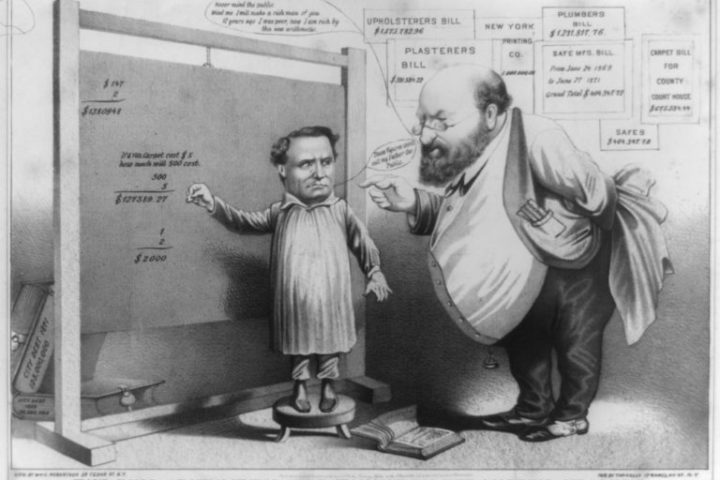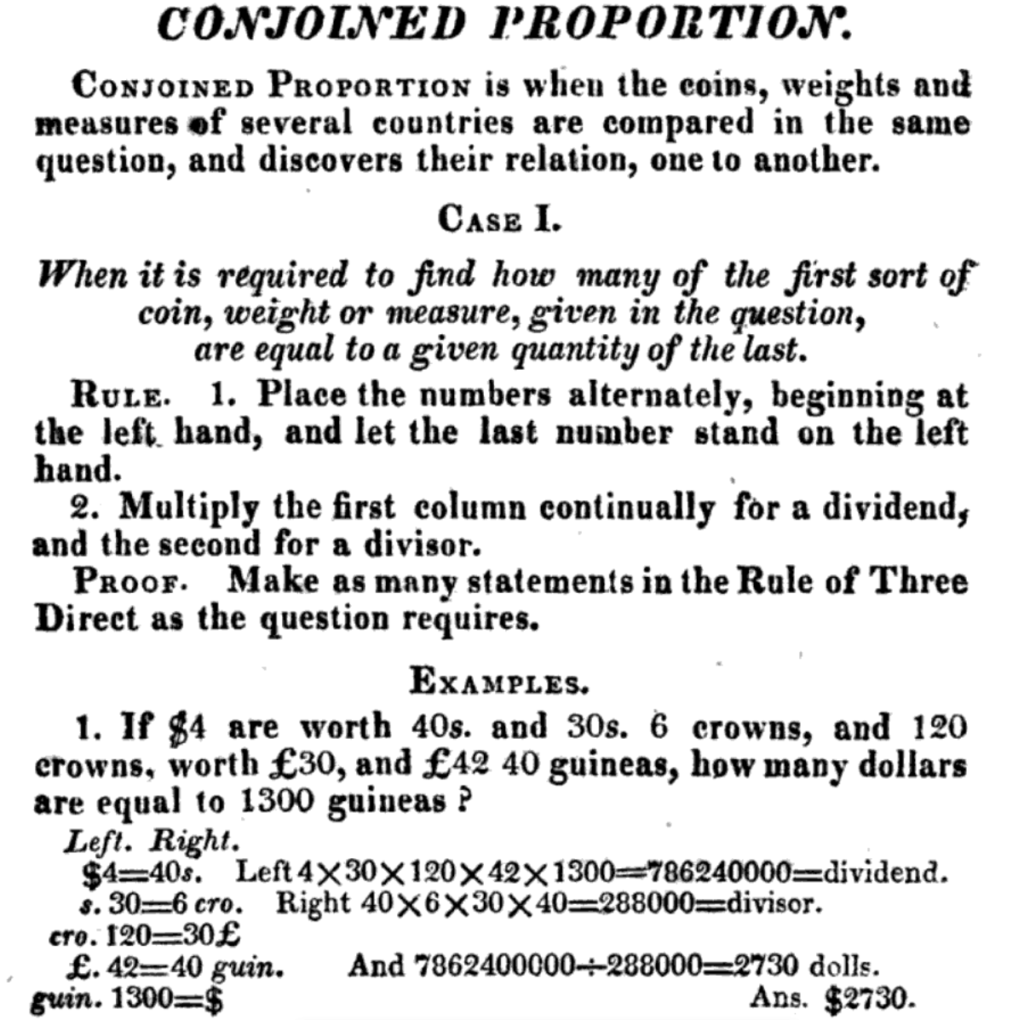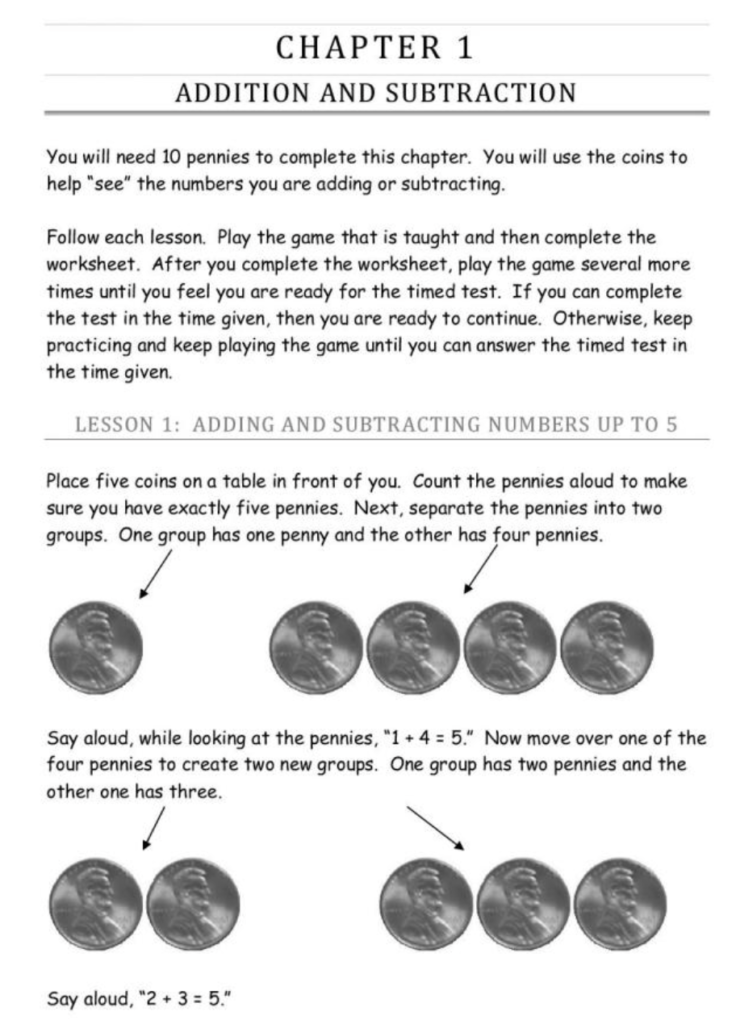February 19, 2024
Learning to Use Money: Comparing and Contrasting the 18th and 19th Centuries to the Present Era in the United States

Jesse Kraft
The modern world is largely capitalistic. Very few things exclude the concept of money in one way or another—from pre-production to consumption to disposal, and everything in between. Even something as seemingly moneyless as volunteering is fraught with monetary concerns. The fact that a volunteer does so without receiving money is gratifying and helpful, but would not exist without the initial concept of money. The understanding of money, however, is not inherent to humanity. People need to learn what it is and how to use it. Furthermore, the concept of money, how it is used, and many other factors of the concept can change over time and space. This has caused people to learn these concepts differently throughout the world—sometimes, drastically. Today, in nearly all parts of the world, monetary conditions have simplified as monetary sovereignty has become more and more of a reality by most countries. As a result, pedagogical methods of money have also simplified over time.
This discussion will revolve around the following abstract. First, students in the eighteenth and nineteenth centuries learned arithmetic largely through the study of money. Because the monetary system comprised of coinage from various parts of the world, early Americans navigated a complex monetary system through the use of now-obscure mathematical formulas and needed a relatively diverse knowledge of techniques in order to use it and allow money to circulate. The main purpose of many of the rules and formulas used revolved primarily around the idea of turning various forms of money into a single unit of account, such as converting Spanish, French, and English coins into American dollars. Students of the twenty-first century, on the other hand, do not live with such a monetary reality and, therefore, do not need to learn many of the formulas that were common knowledge just a few short centuries ago. The need to learn a single monetary system that functions in such an easy fashion largely revolves around denomination identification, and the addition, subtraction, and division of such pieces.
In the eighteenth and nineteenth centuries, American students learned an imported form of mathematics—literally books that were printed in Britain (usually London) and were shipped to the colonies. Some of the earliest and most popular books included The Schoolmaster’s Assistant by Thomas Dilworth and the Scholar’s Guide to Arithmetic by John Bonnycastle. Although arithmetic books printed in the colonies existed as early as the 1720s, these were published in very small numbers and not widely distributed. The first widely-produced arithmetic book published in the United States was Nicolas Pike’s A New and Complete System of Arithmetic Composed for Citizens of the United States in 1788. This book underwent many, many reprintings throughout the 75 years thereafter and truly did help define the method by which early American citizens learned and understood mathematics. Another common method for learning math was to create your own textbook, and make what were known cyphering books. Because of the relatively-high price of textbooks, oftentimes only the teacher might own an actual textbook. Students would then use a blank book to copy the formulas, exercises, and examples from the one textbook, verbatim.
One of the most often needed mathematical formula that was needed for day-to-day commerce was called the Rule of Three. This was needed when changing from one currency to another, as one of its many instances of usage. One example read, “My correspondent in Maryland purchased a cargo of flour for me, for £437 that currency; how much Massachusetts money must I remit him, £125 Maryland being equal to £100 Massachusetts?”[1] To solve such a question, the Rule of Three could be employed, which basically attempts to answer the question, “If A is to B, then C is to what?” The author of the example was able to create two different formulas, one using the actual amounts that two currencies are relative to one another, and the other using the ratio between the two, so that the first reads, “As £125 : £100 :: £437 : X,” and the second reads, “As 5 : £437 :: 4 : X.” Regardless of which method was used, both came up with £349 12s. as the answer. The easiest way to resolved them is to divide the third number by the first number, then multiply that by the second number. Therefore, 4 divided by 5 is 0.8, which turns into £349.6 when multiplied by £437. The Rule of Three was so important to day-to-day commerce that indentured servants were often contractually obligated to learn it during the time period under consideration. It was generally considered the one golden rule that was necessary to properly function in nineteenth century commerce. It was common knowledge to most, but has since been largely lost in the teaching of arithmetic.

Another common was called conjoined proportion. This was another method of converting one type of currency to another, and typically employed when three or more different currencies were involved in the transaction. One example asks, “If $4 are worth 40s. and 30s. are worth 6 crowns, and 120 crowns are worth £30, and £42 are worth 40 guineas, how many dollars are equal to 1,300 guineas?”[2] (Fig. 1) An easy method to answer such a question is to essentially list each of the currencies in a column to the left, with the converted sum to the right. Multiply each of the left numbers with one another, and all of the right numbers with one another, and divide. Multiplying 4 x 30 x 120 x 42 x 1,300 = 786,240,000, while 40 x 6 x 30 x 40 = 288,000. Divide those two to receive 2,730, and the answer is that $2,730 equals 1,300 guineas.
Twenty-first-century students of arithmetic, on the other hand, are not subjected to such specific rules and methods, as the course of monetary exchange on a day-to-day basis has changed dramatically since the nineteenth century. When it comes to money, arithmetic is basically taught in two basic forms: addition-subtraction and in fraction form. A most common method is the use of pennies to teach the basic principle of addition and, at the same time, subtraction (Fig. 2). Teaching mathematics becomes a little more involved for twenty-first-century students when fractions are involved. Although decimals are, in theory, the antithesis to decimals, each has a set mathematical relationship with one another. The United States dime, for instance, is simply one decimal point from a dollar, it also has a fractional equivalent, which would be one-over-ten.

There are two historical occurrences that largely contributed to the transition in the way that mathematics was taught. The first was decimalization. Decimalization is the conversion of money into a system generated from a base-10 numbering system. That is, when 10 of one coin is accumulated, this equates to another denomination in the system—though sometimes there are also denominations within those intervals. For instance, 10 cents equal 1 dime, and 10 dimes equal one dollar, with other denominations in between. This simplified the way in which people had to think about money. Prior to this, the primary method used in the United States was based on the British pound sterling, which at the time used a duo-decimal system. This system concluded that 12 pence equal a shilling (rather than 10 units), and 20 shilling equal one pound. The irregularity of this system caused the need for so many variations in multiplication and division to get from one money to the next, as we saw earlier in this presentation. Although the United States first adopted a decimal system in 1785, it took several generations for the average American to think completely in decimals. In some rural communities, the use of fractions in the pricing of goods lasted until about 1910, if not later.
The second historical event that allowed for this pedagogical change was the Coinage Act of 1857, enacted by the United States Congress. This act legally forbade the circulation of foreign coinage in the United States. Prior to this, the coinage from an array of empires circulated in the United States—notably the Spanish, British, French, and Portuguese. These coins still made appearances in more remote areas of the country after 1857, such as the American Southwest, or during times of economic turmoil like the American Civil War, but the passage of this act allowed for the nation to legally become a closed monetary system—or, an economy that functions using just one form of monetary unit and without the need to convert coins for daily commerce.
Although the earlier systems of teaching mathematics allowed for a much more complex understanding and usage of these methods on a day-to-day method, this does not necessarily suggest that the former methods were superior. While the everyday American in the early nineteenth century may have been slightly better attuned to mathematical processes that individuals today do not, this was out of economic necessity and not necessarily because of superior teaching. Author Barry Garelick, for instance, wrote that, “I am not an outright proponent of the philosophy that ‘If you want something done right, you have to live in the past,’ but when it comes to how to teach math there are worse philosophies to embrace.”[3] This quote presumes that the earlier math was “better” than the newer type. However, as I have shown, this change instead results from a foundational change in the form of currency that was used in circulation in the United States.
In conclusion, prior to decimalization and the Coinage Act of 1857, students of mathematics in the United States navigated a complex monetary system, and used now-obscure mathematical formulas to do so. The primary purpose of this knowledge was to convert various forms of money into one another or into an otherwise common unit of account. Students in the twenty-first century, on the other hand, need to understand denomination identification and how the different denominations relate to one another—generally through the use of addition, subtraction, and fraction. Again, this new form of math was deemed necessary because of the official adoption and popular usage of decimalized money based on the United States dollar.
[1] Nicolas Pike, A New and Complete System of Arithmetic Composed for the Use of the Citizens of the United States (Worcester, MA: Isaiah Thomas, 1797), 127.
[2] Daniel Staniford, Staniford’s Practical Arithmetic, in which the Rules are Rendered Simply in the Operation, and Illustrated by a Variety of Useful Questions, Calculated to Give the Pupil a Full Knowledge of Figures, in their Application to Trade and Business; Adapted Principally to Federal Currency (Boston: J. H. A. Frost, 1818) , 172.
[3] Barry Garelick, Confessions of a 21st Century Math Teacher (Modern Education Press, 2015).